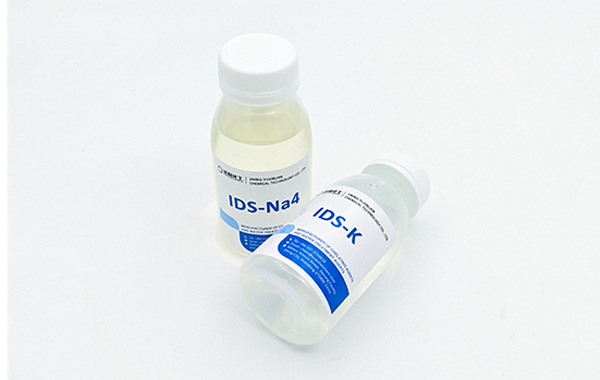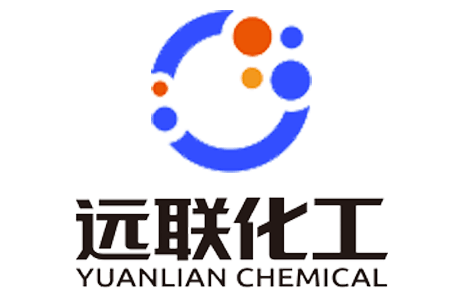
Tetrasodium Iminodisuccinate (IDS) for Hydrogen Peroxide Stabilization: Sustainable Solution for European Industries | Yuanlian Chemical
Hydrogen peroxide (H₂O₂) is a cornerstone chemical in European industrial operations, powering textile bleaching, pulp processing, water treatment, and disinfection across the continent. Yet its versatility is undermined by a critical challenge: metal-ion catalyzed decomposition. Transition metals like iron (Fe³⁺), copper (Cu²⁺), and manganese (Mn²⁺) act as accelerants, triggering premature breakdown that erodes efficiency and raises costs. For European manufacturers navigating strict sustainability regulations and competitive pressures, a high-performance, eco-friendly stabilizer is essential. Yuanlian Chemical’s Tetrasodium Iminodisuccinate (IDS) delivers on both fronts—combining superior hydrogen peroxide stabilization with industry-leading environmental credentials.

The Hidden Cost of Metal Ion Contamination in European Factories
Metal ions, often present in raw materials, process water, or equipment runoff, pose tangible risks to European industrial operations. Their catalytic effect on H₂O₂ decomposition leads to:
-
15-30% reduced bleaching efficiency in textile and paper production (compared to uncontaminated processes)
-
Up to 40% higher chemical consumption, inflating operational costs
-
Uneven fabric bleaching and potential fiber damage, compromising EU quality standards
-
Inconsistent disinfection in water treatment, risking regulatory non-compliance
-
Wasted energy from extended processing times and rework
With Europe accounting for 50% of the global green chelating agent market, manufacturers are under growing pressure to address these issues without sacrificing sustainability goals.
Yuanlian’s IDS: The Sustainable Stabilization Breakthrough
Tetrasodium Iminodisuccinate (IDS) represents the next generation of chelation technology, engineered to solve H₂O₂ instability while aligning with European environmental values. As a phosphorus-free, readily biodegradable chelator, it stabilizes hydrogen peroxide through three core mechanisms:
1. Precision Metal Ion Sequestration
IDS acts as a "molecular trap," forming stable, water-soluble complexes with Fe³⁺, Cu²⁺, and Mn²⁺ ions. This blocks their interaction with H₂O₂ molecules, maintaining peroxide concentration throughout industrial cycles. In pulp bleaching tests, IDS matched the chelating performance of traditional EDTA while eliminating environmental persistence risks.
2. Unmatched pH Versatility
Unlike conventional chelators that lose efficacy outside narrow pH ranges, IDS performs consistently across pH 3–12. This makes it adaptable to Europe’s diverse industrial processes—from acidic paper bleaching baths to alkaline textile pretreatment and neutral water disinfection systems.
3. EU-Compliant Environmental Safety
IDS meets the strictest European sustainability benchmarks:
-
80% biodegradation within 28 days (exceeding OECD 301 ready biodegradability standards)
-
Phosphorus-free formulation, supporting EU phosphorus restriction directives
-
Non-toxic profile, with no carcinogenic or reproductive hazards
-
Full REACH registration, aligning with ECHA’s restrictions on persistent chelators like EDTA
Proven Applications Across European Key Industries
IDS delivers measurable value in Europe’s most demanding sectors, where performance and sustainability are equally critical:
Textile Bleaching
European textile manufacturers report transformative results with IDS:
-
20–25% reduction in H₂O₂ and chelator consumption
-
Consistent whiteness levels across batches, reducing quality rejects
-
Protected fabric integrity, even with sensitive natural fibers
-
Compliance with EU Ecolabel requirements for sustainable textiles
Pulp & Paper Processing
In peroxide bleaching of eucalyptus and bagasse pulps, IDS optimizes performance:
-
Optimal conditions: 0.3% dosage for eucalyptus pulp (60°C, 50 min) and 0.8% for bagasse pulp (70°C, 60 min)
-
Minimized brightness reversion, extending paper product shelf life
-
Reduced water usage by cutting reprocessing needs

Water Treatment
Municipal and industrial water facilities across Europe rely on IDS to:
-
Enhance peroxide-based disinfection, neutralizing bacterial contaminants
-
Prevent pipe scaling from metal ion precipitation
-
Avoid chemical overuse in variable water hardness conditions
Industrial Cleaning & Sanitization
IDS stabilizes peroxide in EU food and beverage cleaning formulations:
-
Extends product shelf life by 3–6 months
-
Maintains efficacy in high-temperature (up to 95°C) cleaning cycles
-
Meets EC 1935/2004 food contact material safety standards
Technical Advantages That Drive European Adoption
Yuanlian’s IDS outperforms traditional and alternative chelators on key technical metrics:
| Feature | Yuanlian IDS | Traditional EDTA | Phosphonates |
|---|---|---|---|
| Biodegradability | >80% (28 days) | <10% (28 days) | <5% (28 days) |
| pH Range | 3–12 | 8–10 | 7–11 |
| Temperature Stability | Up to 95°C | Up to 80°C | Up to 85°C |
| Dosage Requirement | 0.1–0.5% (vs. H₂O₂) | 0.3–0.8% (vs. H₂O₂) | 0.2–0.6% (vs. H₂O₂) |
| REACH Compliance | Full Registration | Restricted Uses | Partial Compliance |
Additional benefits include synergistic compatibility with silicate-based stabilizers and consistent performance across Europe’s varying water hardness levels.
Why European Manufacturers Choose Yuanlian IDS
Beyond technical performance, Yuanlian delivers value tailored to European market needs:
-
Regulatory Confidence: Full REACH registration and alignment with EU Green Deal objectives
-
Sustainability Leadership: Superior credentials vs. EDTA and phosphonates, supporting circular economy goals
-
Local Expertise: Dedicated European technical team providing on-site application support
-
Quality Assurance: ISO 9001-certified manufacturing ensuring batch-to-batch consistency
-
Total Cost Optimization: Lower dosage requirements offset price premiums, reducing overall ownership costs (consistent with trends in green chelator adoption)
Practical Implementation Guidelines for European Operations
Maximize H₂O₂ stabilization with these Europe-specific best practices:
-
Dosage: Start with 0.1–0.5% IDS relative to H₂O₂ concentration; adjust based on metal ion testing (common in German and French textile facilities)
-
Timing: Incorporate during peroxide preparation phase for optimal sequestration
-
Water Hardness: Increase dosage by 0.1% for every 100 ppm rise in calcium/magnesium levels (critical for hard water regions like Northern Italy)
-
Compatibility: Mix with silicate stabilizers (1:2 ratio) for alkaline processes like Dutch pulp bleaching
Aligned with Europe’s Green Agenda
Yuanlian Chemical supports the EU’s sustainability priorities by:
-
Replacing persistent chemicals with biodegradable alternatives
-
Reducing industrial water and energy consumption
-
Enabling compliance with Ecolabel and Nordic Swan certification requirements
-
Advancing green chemistry innovation for circular manufacturing
As European industries accelerate their transition to sustainable operations, Yuanlian’s IDS bridges the gap between performance and responsibility—proving that environmental stewardship doesn’t require compromising efficiency.
Ready to optimize your hydrogen peroxide processes? Contact Yuanlian’s European technical team for customized dosage calculations, compatibility testing, and regulatory compliance support tailored to your industry.
Yuanlian Chemical specializes in the production of polyaspartic acid (PASP),tetrasodium iminodisuccinate(IDS), GLDA, MGDA etc. with stable quality and excellent quantity!





Contact us